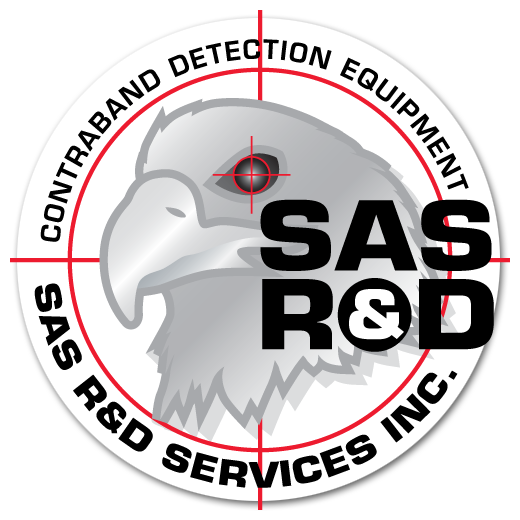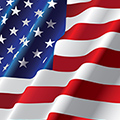Training Aids
We understand the need for training aids to assist the operator in understanding the capabilities and features of the SASRAD equipment that he is using. It is our sincere wish that each and every operator is successful in the field and with this in mind we offer the following:
TESTING & TRAINING TABLE MODEL TT/SCC-1
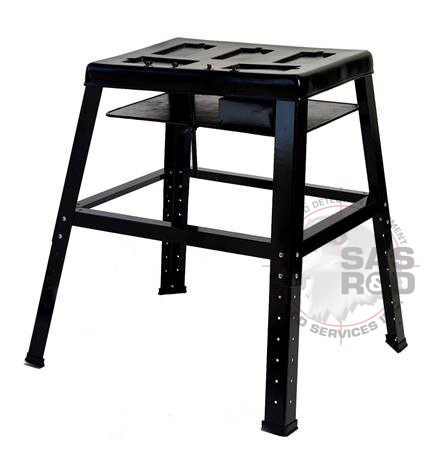
The objective of this table is to convey to the inspecting officer the three variables encountered when using the Xpose or in fact ANY density meter:
- Thickness of wall though which the inspection is being made
- Size of Contraband load
- Distance of contraband from wall
Variation in any of these three variables will give different readings and lead to an understanding of the effect that changes in any of them have on detection capability.
The table is easily assembled in accordance with the instructions supplied, it comprises a frame work on which is placed a surface with five rectangular Indentations into which samples of material operators are looking through can be placed. The samples are cut from materials that your local jurisdiction examines, they could range from steel plate, aluminum sheet, wood, fiberglass of various thickness and so on.
Underneath the table is an adjustable platform that holds the simulated contraband. In our hands-on training we use 2lbs of granulated sugar to represent Cocaine but anything may be used that resembles what you are searching or actual items such as weapons, drugs, cigarettes etc. With the sample of vehicle wall or side material in place, the “contraband” is placed underneath – the Xpose is used to “see” and indicate the difference in density while drawing a graph as the sample is raised and lowered or inspected under various sample materials. We recommend that lead be one of the samples to show what happens when something is lead shielded.
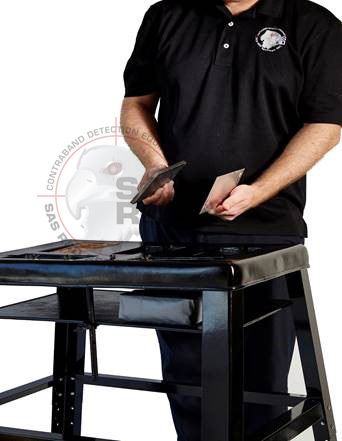
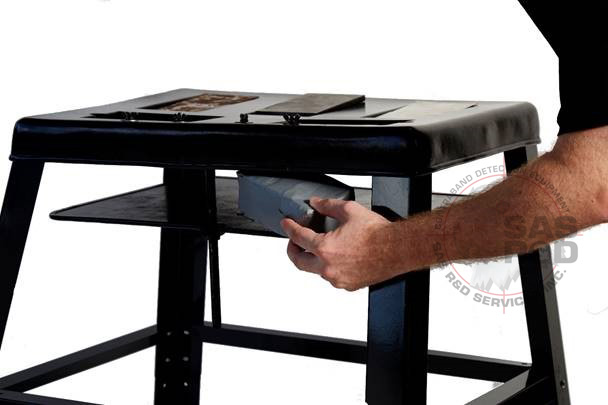
MINIATURE FUEL TANK MODEL FT/RK-1
This miniature fuel tank teaches inspectors how to use a Fiberscope or Videoscope when inspecting vehicle fuel/ gas tanks. The inspectors can practice entering the gas tank from the fuel filler and going deep into the tank into natural voids. They will learn and practice how to search both sides of the tank working their way around the sender unit and internal baffles.
The tank has an opening where instructors can place various samples inside so the inspector may practice identifying the items being smuggled in your areas. Weapons – ammunition – drugs- currency etc. The inspector will learn to prolong the life of any scope by handling it carefully and manipulating it around obstacles and withdrawing from the tanks slowly and under control. – this will minimize any possible damage caused by rough handling.
The Xpose may also be used to search the practice tank and learn from the readings.
This tank is light and made of plastic – it may be placed on our training table or on any desk or table without difficulty.
IMPORTANT: While filling the tank with water presents no problem, we strongly discourage filling the tank with any combustible liquid, especially gasoline as that would pose a fume and fire risk.
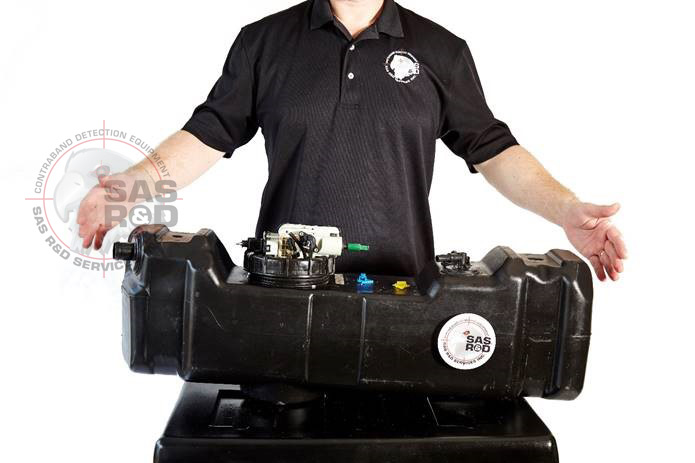
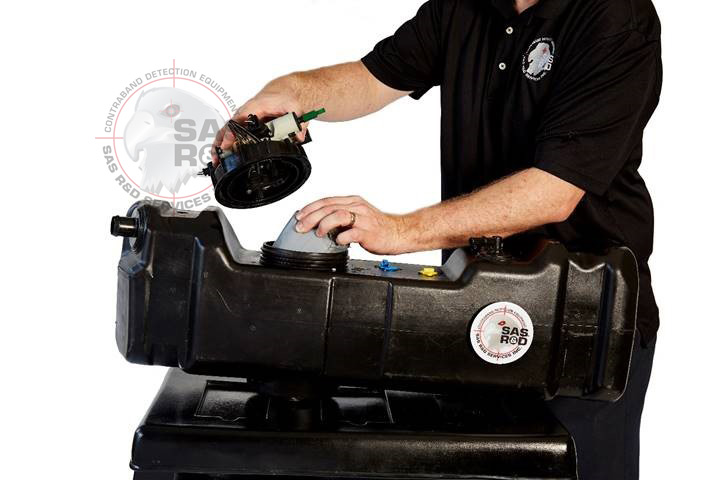
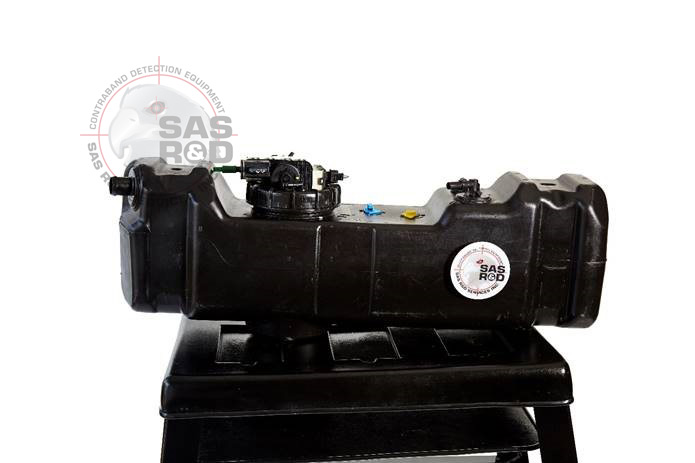
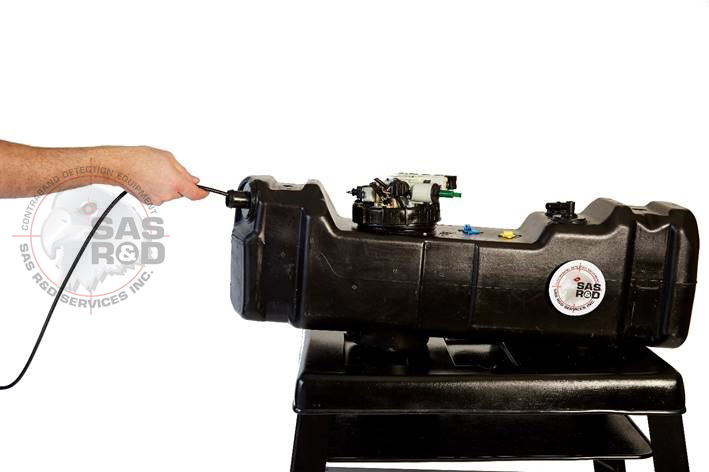
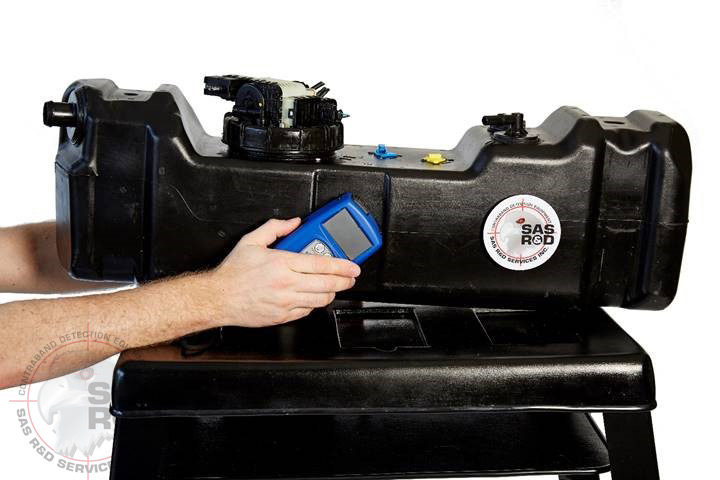
Is a 7.5 microcurie radiation source safer than 10 microcuries as competitors claim?
This paper is intended to explain the difference in the Effective Dose to humans between 2 different activities (7.5 uCi and 10 uCi) of 133Ba isotope used in a hand held contraband detector relative to ordinary risk we face in everyday life.A competitor of ours has offered a version of their unit which is 7.5 microcuries of radiation against our 10 microcuries, claiming that this is safer for the user, In fact, the increased dose to a user of a 10 uCi source over a 7.5 uCi source for a worst case scenario is essentially equal to what one gets in one second of airplane flight on a cross country trip from Washington, D.C. to Los Angeles, CA, a total flying time of up to five hours or 1 in 18,000
10 Microcurie Source
Now let’s compare both these radiation source activities and the actual working life of the source. The working life is based on the sources initial activity and the half-life of the isotope. For 133Ba, the half-life is 10.53 years. So for a 7.5 uCi source, the working life is about 35-40% less than the working life of a 10 uCi source. This translates that the dollar per dollar cost of the 7.5 uCi source is much higher than the cost of the 10 uCi source! And finally another consideration is the scanning time for the contraband detector. Excluding other factors involved, a 7.5 uCi source has 25% less photons/sec output than a 10 uCi source and this in turn increases the length of time it takes to complete a scan. This also may reduce the probability of positively identifying a concealed item (contraband)The Xpose has graphing & digital display, available tablet remote control of all functions and is MIL STD 810G - Water Resistant to IP56 (waterproof available on request) - ISO9001:2008 and most importantly sold under an Exempt Radiation License from the NRC. In other words virtually no restrictions on sale, possession of transfer of the unit.
Our competitor has none of these features.
In short, when comparing the 2 activities (7.5 uCi and 10 uCi) 133Ba sources in hand held contraband detection systems:
- No substantial increase of dose to the user, therefore no increased hazard
- 7.5 uCi lifespan of only 10 years, 10uCi lifespan of 15-20 years
- Longer time to complete a scan with 7.5 uCi
- Reduced probability of contraband detection with 7.5 uCi as compared to 10 uCi
- Exempt Distribution License from NRC ONLY for Xpose
Radiation Licensing
TO USERS OF DENSITY METERS – IMPORTANT INFORMATION:
There are several important points that users and potential users of the New Technology SAS-Hitech-Xpose Contraband Detector should be aware of. In order to simplify ownership of this device, SAS-Hitech-Xpose has been developed and licensed under United States Law as an Exempt device. Other density meters of this type are licensed under a General license. There are highly important differences between the two types of licenses. Here are a couple of the major differences:MAJOR DAMAGE OF DEVICE:
General licensed (competitors product) requirements (per their own manual):- Rope or cordoning off the area to keep people away
- Contact public health (radiological authorities) and emergency services provider for assistance
- Notify the manufacturer
Pick up unit and send it to Authorized Service Center or factory for repair (nothing more)
CHANGE OF OWNERSHIP or DISPOSAL
General license (competitors) requirements:The device is assigned to a specific location and cannot be assigned to another location without written notification to the radiation regulatory entity (State or Federal as applicable). If the device is given or transferred to another location, even if it is with the same agency (i.e. if PD Precinct 5 gives it to PD Precinct 6), a transfer of location must be filed by the user (licensee) prior to transfer. Failure to do so is subject to fine and reprimand.
Disposal of General Licensed unit: The user MUST dispose of the device as Hazardous waste and transfer to a license disposal facility. This can be done, under US law by:
- Exporting the device in accordance with NRC regulations found in 10CFR§110
- Transfer to a Specific Licensee authorized to receive the device with supporting documentation.
- Transfer to another General Licensee under strict regulations found in 10CFR§31.5(c)(9) or equivalent Agreement State regulations.
- Remove label and throw away in regular garbage.
- No restriction. It can be given it to whomever, whenever, wherever required. No paperwork/transfer licenses/authorizations required.
